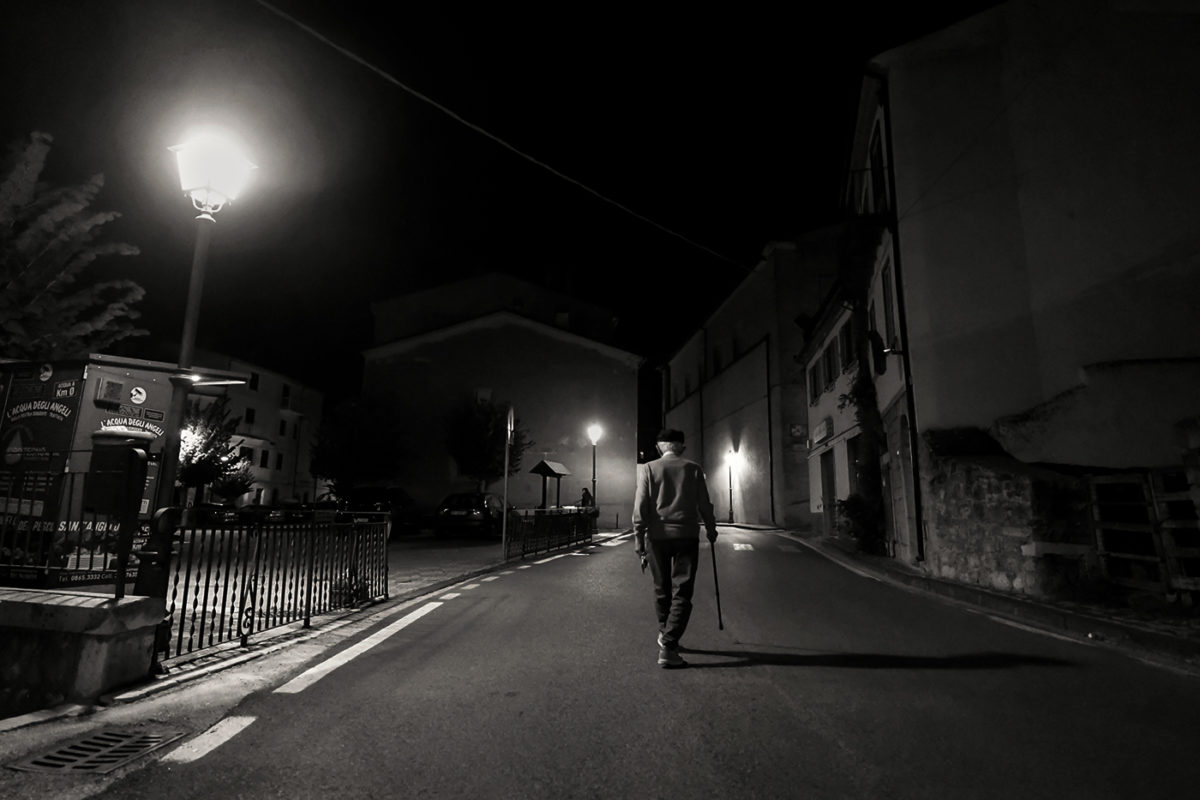There was a time when summer carried the scent of dry grass and ripe fruit. It wasn’t measured in days, but in moments of waiting: the final school bell, the first cicadas filling the afternoons, the long evenings stretching out like the sunset behind the hills. Back then, in my small village, August was the true destination of the year, and as a child I would spend winter and spring waiting for it, the way you wait for a promised gift.
We didn’t go away to far-off cities for the holidays. Our summer was all there, in the stone-paved streets and the sunlit square, where the heat shimmered in the air and the old men told ancient stories outside a worn-out café. It took so little to be happy: a slightly deflated ball, a piece of elastic, a handkerchief tied up like a net. The world ended where the village ended, and I never felt the need to go beyond. August was our ‘Sunday of the year’: long, slow, and full of promise.
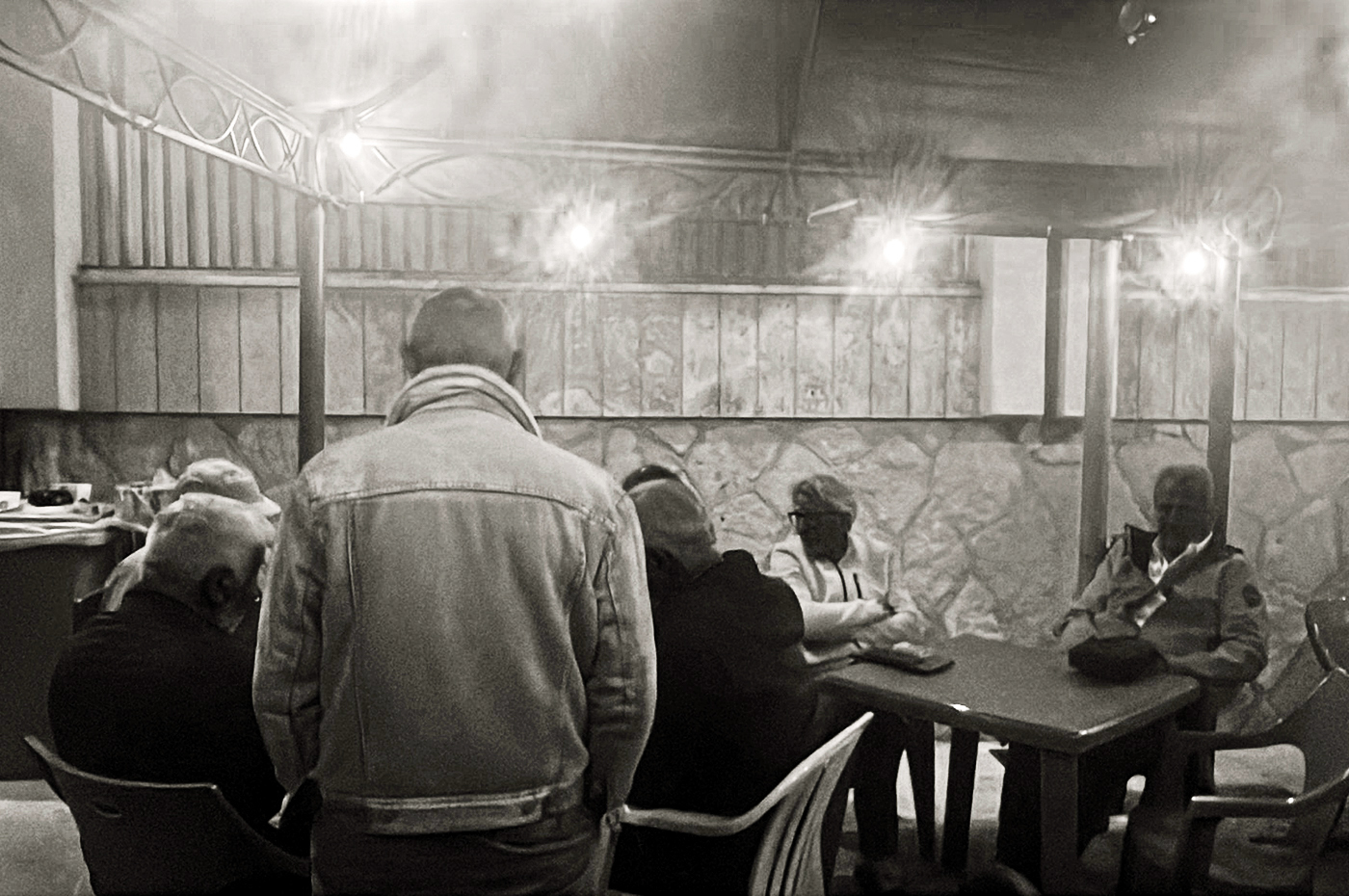
SANT’ANGELO DEL PESCO, August 2025 – A return to simple gestures: an evening with friends in front of the bar—conversations, card games, and a ritual that withstands the passage of time. – Photo: Sabina Delle Donne.
When the fathers who had emigrated returned from far away, the village dressed up for celebration even before the feast itself. They arrived with stiff suitcases, hands marked by labor, faces worn and tired, yet their eyes shone with light as they embraced us, as if trying to make up for lost time. I didn’t yet understand what sacrifice meant. I ran free, my skin carrying the scent of sun and dust, certain that such happiness would last forever.
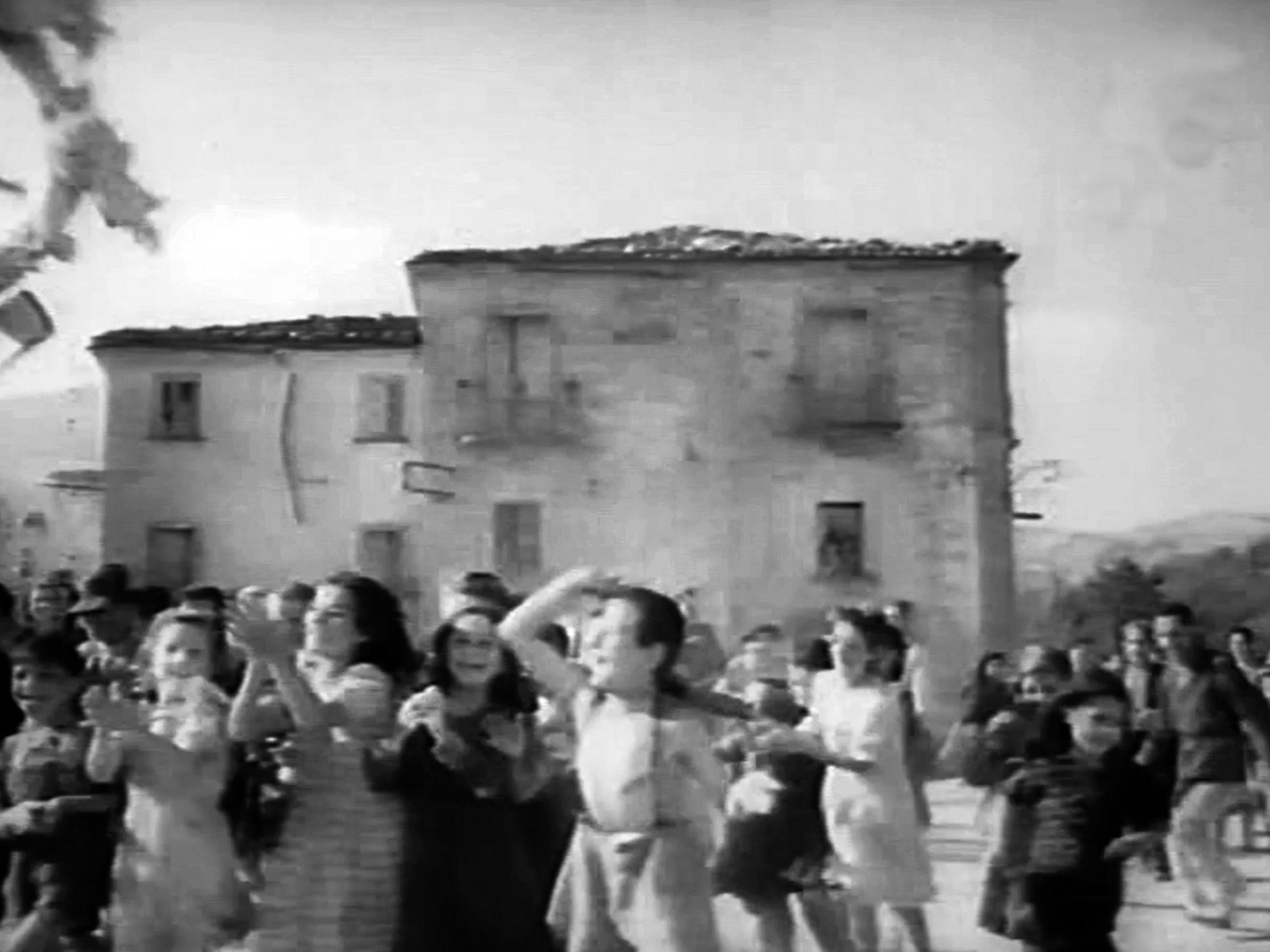
SANT’ANGELO DEL PESCO, August 1949 – Children’s joy bursts into the square with the arrival of the year’s most anticipated celebration. – Still from the documentary film La Festa by director Ugo Fasano.
August 15th was the beating heart of summer. From Uncle Giuann’s stall came the sweet scent of cotton candy, blending with the roasted aroma of warm peanuts. The brass band, in red jackets and golden hats, filled every alley with bright, brassy notes. At the center of the village, the carousel with its flying swings and colorful lights spun late into the night; and if you managed to grab the ribbon, you won a free ride. That was my favorite.

SANT’ANGELO DEL PESCO, August 1949 – The handcrafted carousel, with its colorful lights, spun at the heart of the village like a small, joyful planet. – Still from the documentary film La Festa by director Ugo Fasano.
Then came the solemn part: the Mass, followed by the procession steeped in deep popular devotion, making its way at night toward the chapel of the Madonna, guardian of the sacred painting. In the afternoon, instead, the games for young and old revealed the more intimate, genuine, and familiar side of the celebration.
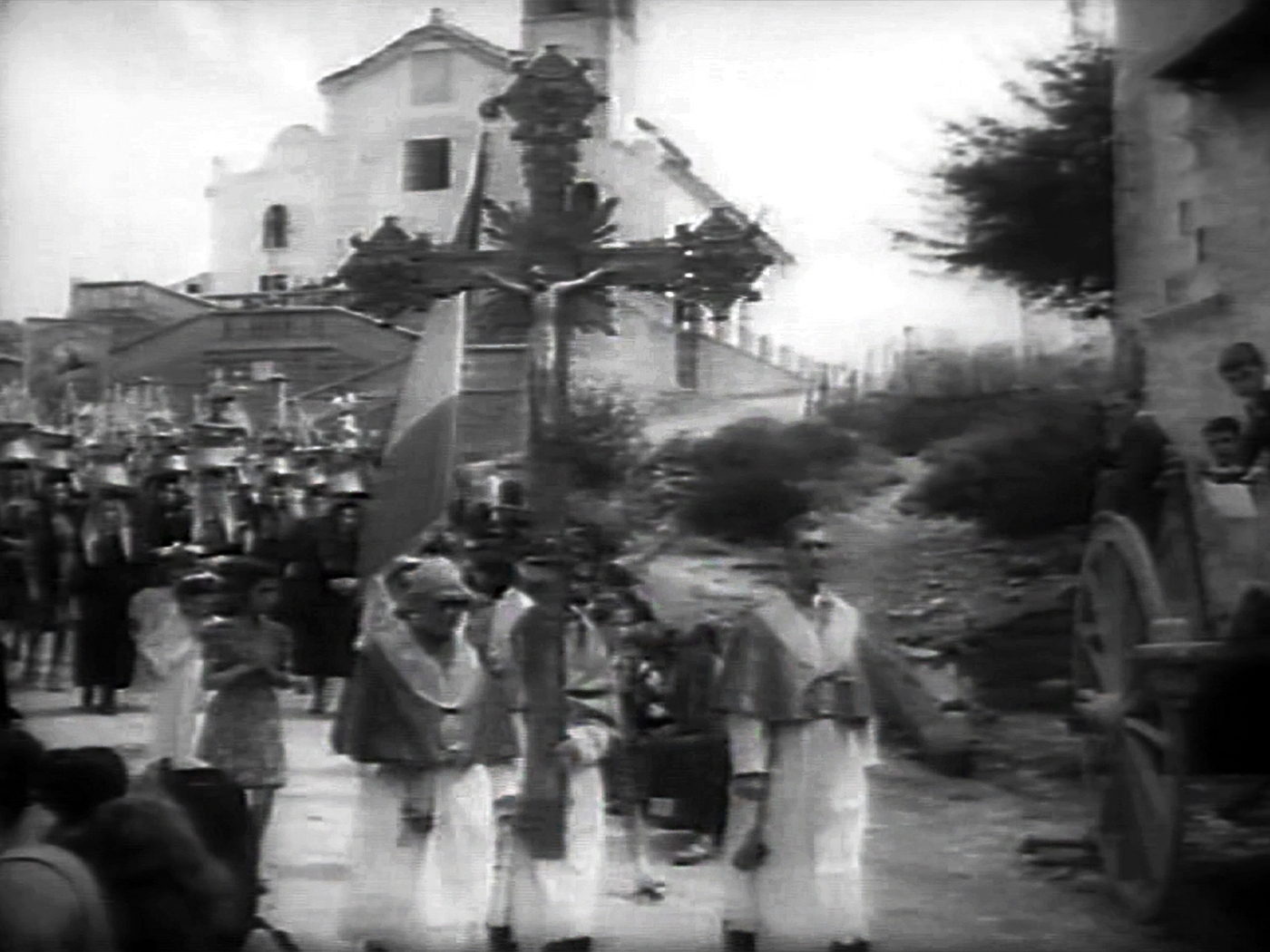
SANT’ANGELO DEL PESCO, August 1949 – The procession moves through the village streets with devotion, songs, and solemn steps, accompanied by the attentive gaze of the community. – Still from the documentary film La Festa by director Ugo Fasano.
In the evening, with songs, dances, and clapping hands, a true musical spectacle came to life, where tradition blended with collective joy, filling the air with the rhythm of celebration. Late into the night, fireworks marked the close of a day rich with intensity and emotion. Yet the magic of the year’s most anticipated festival did not fade with the last sparks: it lingered in the air, in the smiles, and in the faces lit up with enthusiasm, stretching on long after.
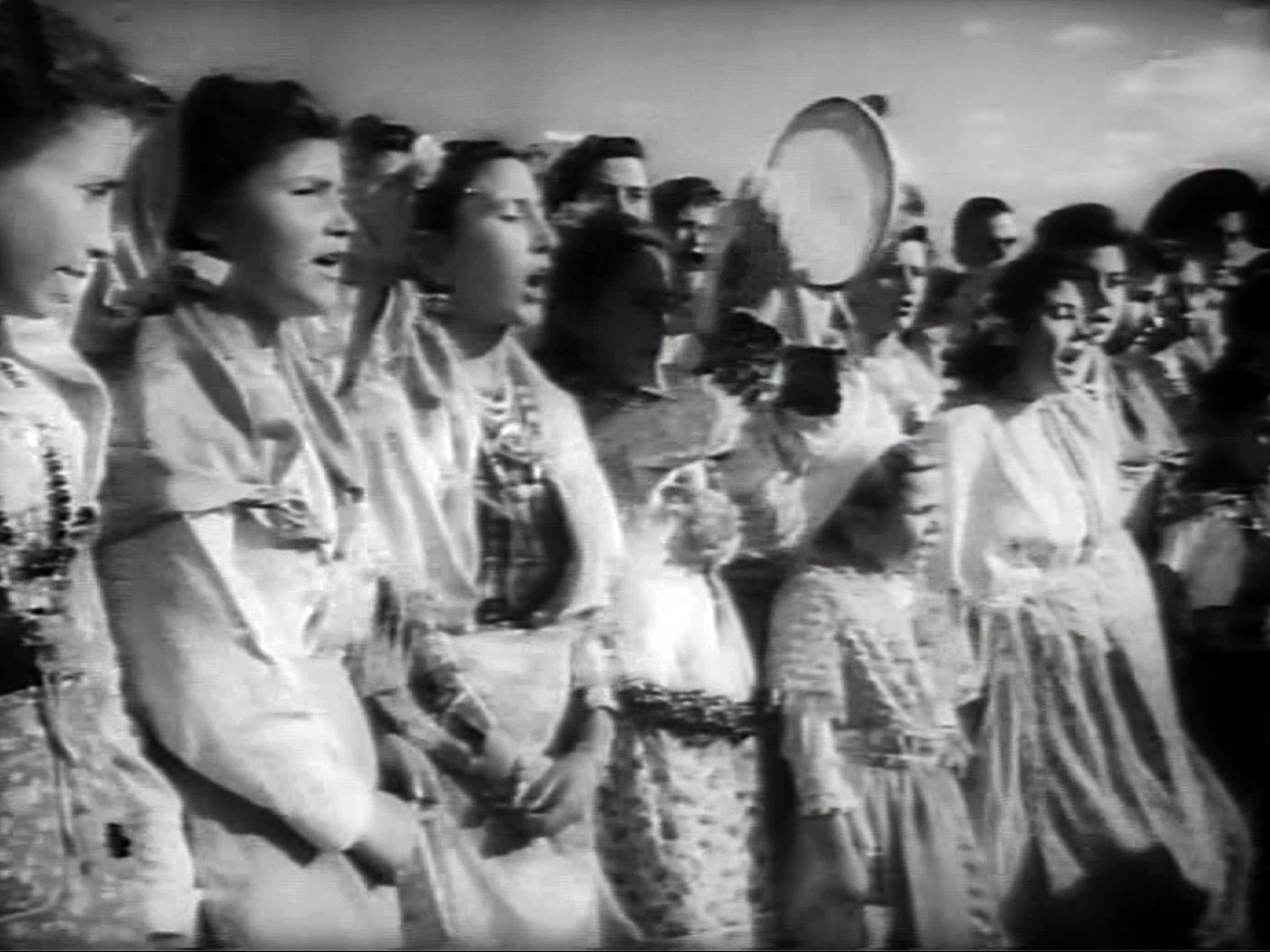
SANT’ANGELO DEL PESCO, August 1949 – In the evening, with songs, dances, and clapping hands, a true musical spectacle came to life, where tradition blended with collective joy. – Still from the documentary film La Festa by director Ugo Fasano.
And yet, each year, something still endures. The band at dawn waking the village amid the cool air and the scent of freshly brewed coffee; the flickering candles during Mass; the procession moving forward in slow steps to the deep sound of the bass drum. These are the moments carved into my memory, and that, despite everything, survive.
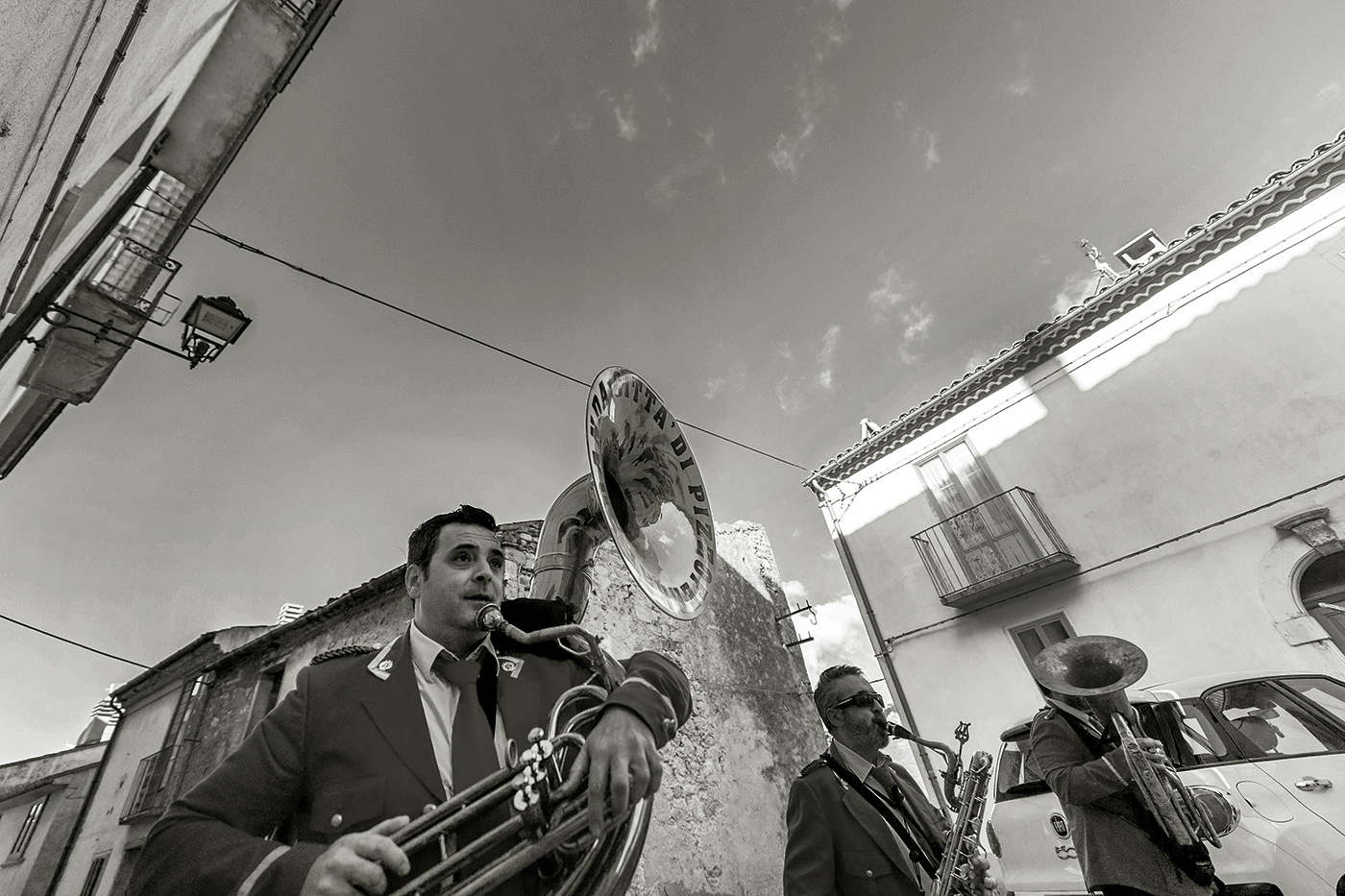
SANT’ANGELO DEL PESCO, Agosto 2024 – The band marches in unison, offering the community a musical accompaniment that makes the celebration even more evocative. – ViviSantangelo / Oreste Di Cristino.
Today that festival has lost its flavor. The most beautiful celebration of the year has turned into a chaotic rush: cars parked everywhere, musical evenings stripped of poetry, leaving only noise, and lights without enchantment. What remains is the clamor, no longer the wonder. That genuine, familiar spirit has dissolved. As Leopardi might have said: sweet in anticipation, bitter in the present, melancholy in memory—and even in the future.
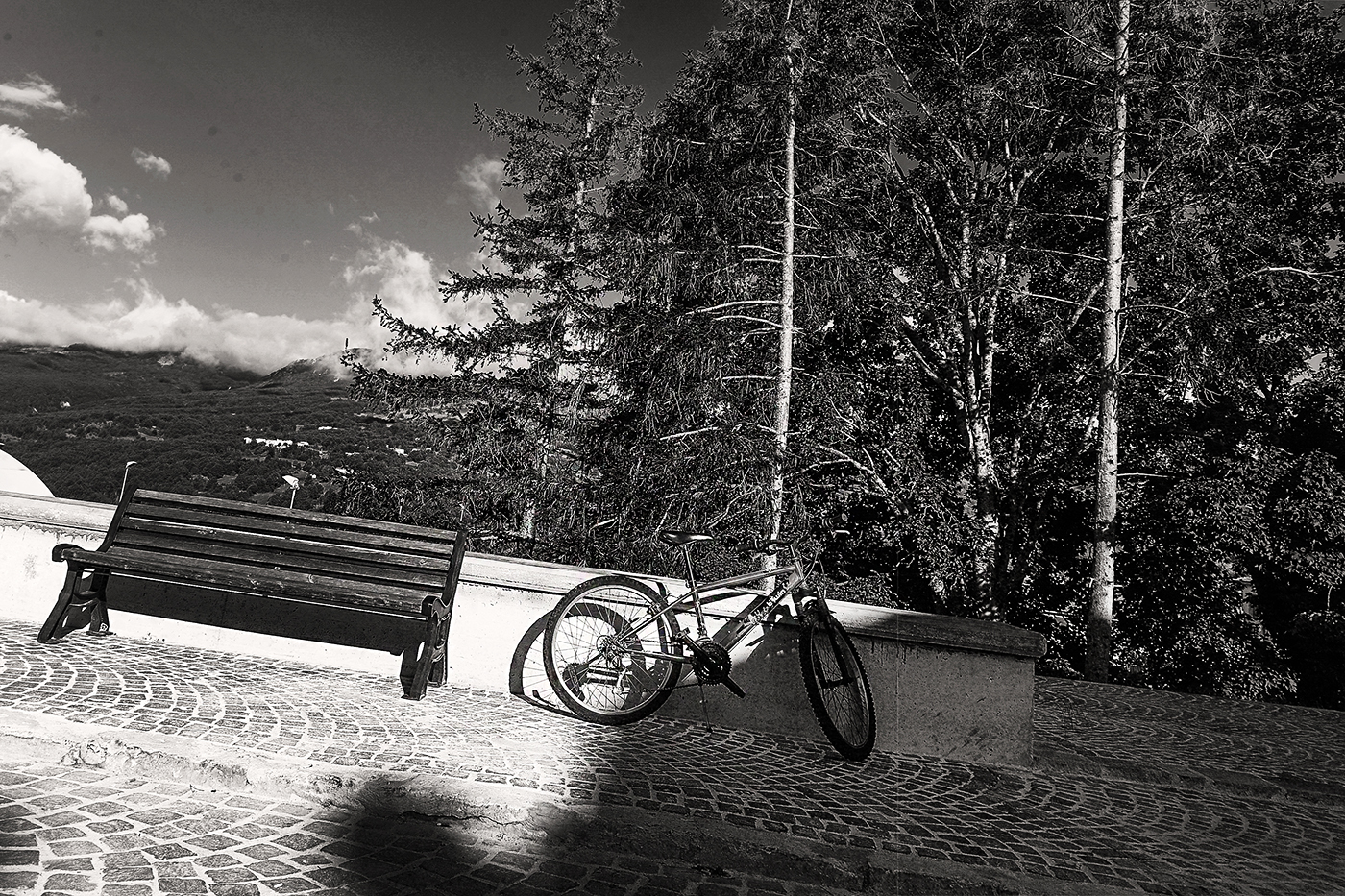
SANT’ANGELO DEL PESCO, Agosto 2024 – The festival is now a memory, the streets are empty, and the village returns to silence. – ViviSantangelo / Oreste Di Cristino.
A scene I know by heart now, one that repeats itself every year: deserted streets, a silent square, a place that, between a story and a few posts on social media, becomes part of everyday life—often lived without us even noticing. Spaces that naturally reflect the world we inhabit: a small village made up of many solitudes, each different, each enclosed within itself. And yet, there are moments capable of breaking that spell.
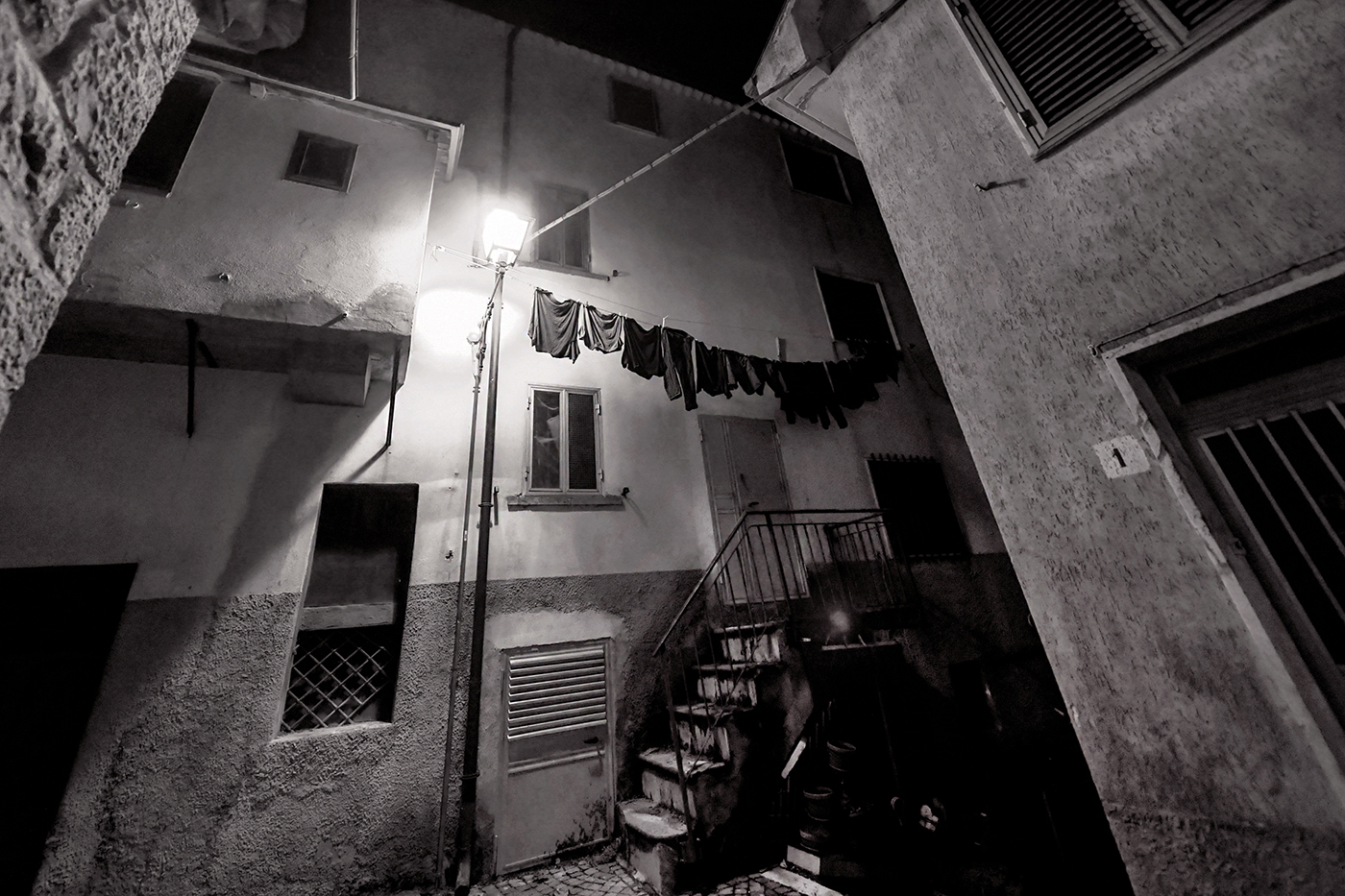
SANT’ANGELO DEL PESCO, Agosto 2024 – The lights go out, the streets fall silent: the long-awaited festival is over. Lifes return to their everyday quiet.
And so, once those few days of celebration have passed, the village returns to its silence. We remain solitary wanderers, immersed in a daily life marked by parallel solitudes. Yet I know well that, when the festival band plays at dawn, the memory of that child who once ran, convinced the celebration would never end, will resurface within me.
